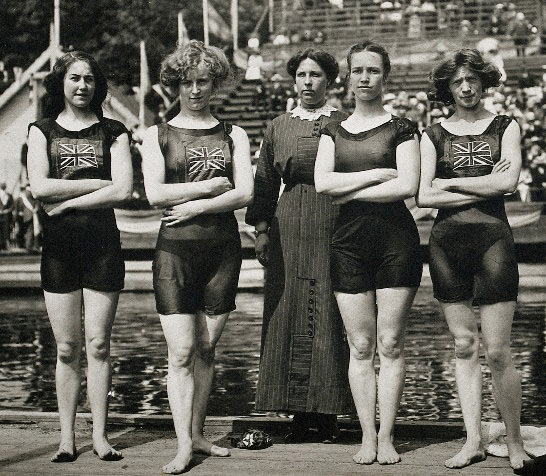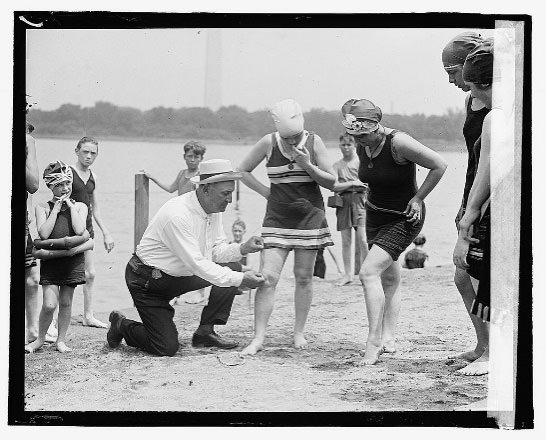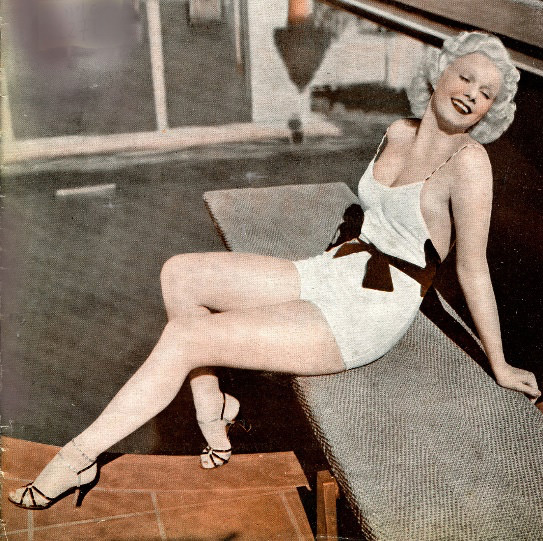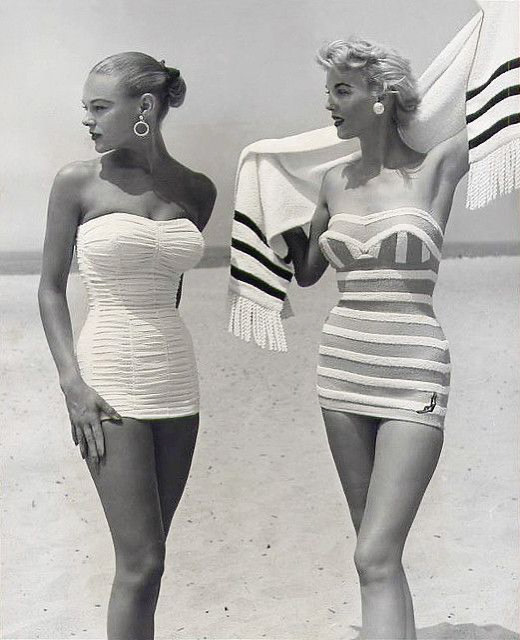The bathing "suit" appeared on the scene sometime in the mid-19th century. The notion of entering and enjoying oceans, lakes and rivers for recreation became a "thing" and improvements in transportation and rail systems made "going to the seashore" a popular activity.
This was the Victorian period, that time of many secrets, so women were outfitted in corseted flannel dresses with accompanying bloomers and stockings, to ensure that their modesty was preserved. Truly a "suit" the fabric was heavy and opaque, and, weighing in at around 25 pounds when wet, it kept women from doing more than bouncing and splashing about in the water.

By the early 20th century, the Victorians began to lighten up a bit, and women punted the corsets and bloomers but still kept themselves covered with close fitting skirts and stockings.
The sport of competitive swimming also opened up to women, necessitating some changes to their swimming costumes which was designed more to drown them than to improve their speed. Female competitors began to wear single knitted suits similar to the fashions favored by men.

This segued into the roaring 20’s, which ushered in a new era of fashion for women; higher hemlines, lightweight knits and bright colors. These changes in opportunity and fashion reflected in the mainstream bathing "suit" which became simplified and scandalous, doing away with stockings, sleeves, skirts, and all those things that kept a woman decent in the sand.
"Swimwear police" (someone’s gotta do it) measuring bathing suits to ensure they are no higher than 6" above the knee, circa 1922.

As women got increasingly independent and fabric got increasingly versatile, the bathing suit continued to evolve. The 1930’s saw the first commercially available bathing suit, known as the Maillot style. One piece, crafted of a thin, supportive fabric, the new bathing suit was shiny and figure hugging. Necklines and backs were lower and legs were cut higher. And pin-up girls helped us win WWII.

The once piece suit became a two piece suit, with the umbilicus carefully concealed until, in 1946, fashion designer Louis Reard exposed the belly button in all its glory in his "bikini" bathing suit. So scandalous that he could only get a French stripper to model it, the bikini managed to generate some tsk tsking but really didn’t take off as a mainstream bathing suit.
In fact, the following decade went the other direction and women’s bathing suits took a turn, becoming structured and corseted to enhance or create the Marilyn Monroe curves that had become the standard for women’s beauty. These suits sucked in the stomach, cinched in the waist and pushed out the bust, making it impossible to breathe, but, hey who needs oxygen?

This didn’t last long because the swinging 60’s were right around the corner and the bikini came back in all its glory, becoming a staple on beaches and backyard pools the world over. While the suits still covered all the naughty bits, an evolution in fabrics (hello spandex) left little to the imagination. The "fits like a birthday suit" suit we all know (and some love) of today was born.
The 70’s saw the high-cut, low-cut Farrah Fawcett suit; string bikinis appeared on the scene. And then, well, Brazilian styles were added to the mix, exposing bare bottoms and necessitating an entirely new way of waxing.
What’s next? No point in going without; modern bathing suits tell you everything you want (or don’t want) to know. Don’t even get me started on men’s Speedos. Ankle-deep in the 21st century, bathing suits have stayed solidly if flimsily spandex. A concern about the sun has seen an increase in SPF fabrics and there are now long sleeved, capri length suits on the market. But it is doubtful these will ever replace the next to nothing preference that has become the norm.

No posts found